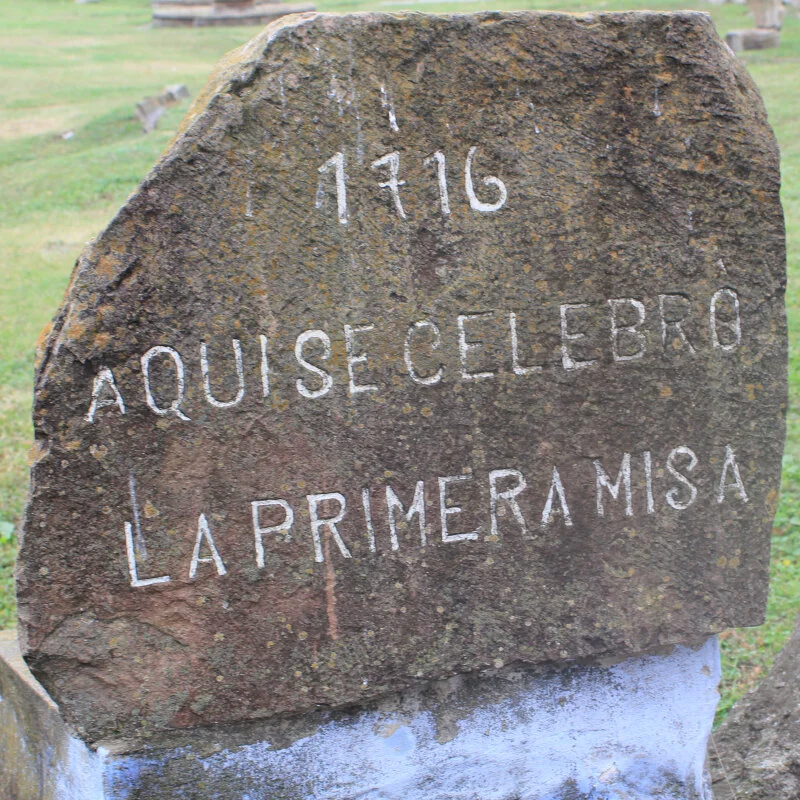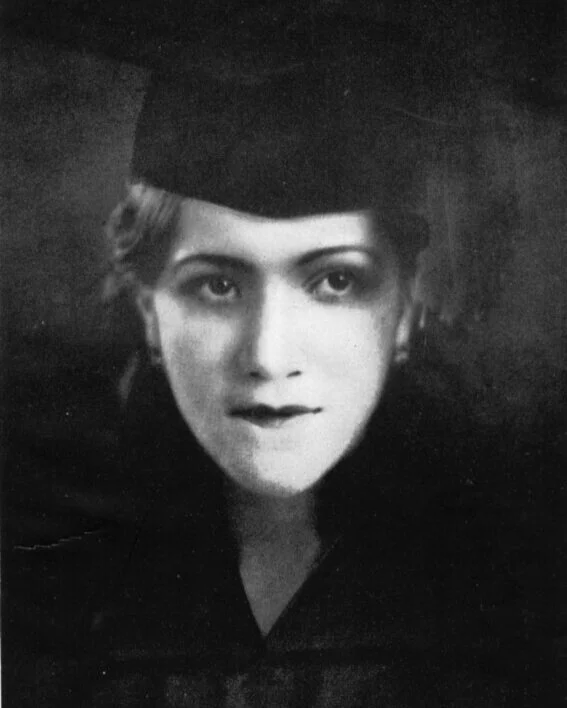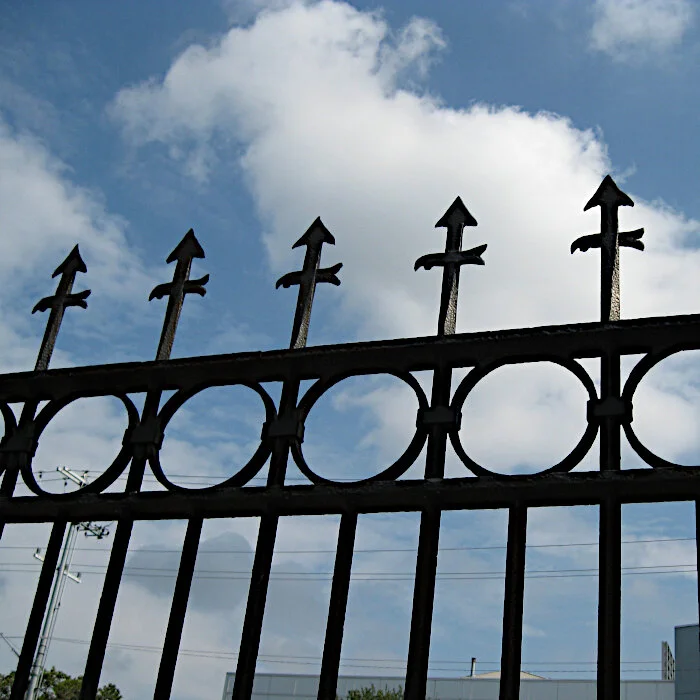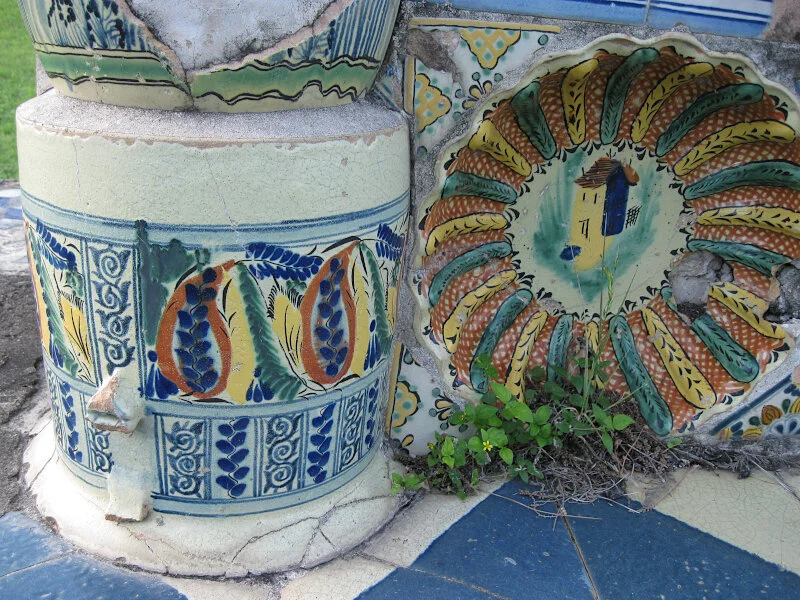Along the Camino Real
In pre-Colonial times, indigenous peoples migrated between points along the 1200-mile-stretch between the Aztec capital of Tenochtitlan and the territory of the Caddoan tribe of the Adai in northeast Tejas. As they tracked the movements of game animals and traded their goods, they began to etch a network of trails into the land. In the seventeenth century, with the increasing activity of Spanish and French colonizers, the Spanish expanded and developed the trails, from Mexico City northward, collectively calling them the Camino Real. By the late 1600s, Spanish missionaries had established a mission outpost in what is now east Texas.
Several months ago, I met with a group of UTSA students. They were researching the history of the Camino Real. The trails, after a period of great decline, are now designated as a National Historic Trail and efforts to document sites along the historic network are increasing.
Before Miraflores, before Brackenridge Park, and even before San Antonio, segments of the Camino Real passed roughly along the San Antonio River from the south to the river’s source, now called the Blue Hole. Aboriginal tribes dwelled near the the river’s clear spring waters emerging from the headwaters, and in the early eighteenth century San Antonio established itself there as a city.
The students’ assignment, as I understood it, was to explore any historical connection between Miraflores, the land which once was Dr. Aureliano Urrutia’s historic San Antonio garden, and the Camino. Does it make sense to call attention to Miraflores as one travels along or studies the trail today?
UTSA Students making their presentation on Miraflores and the Camino Real. You can listen to their podcast.
We met on a weekend morning to discuss the intersection of Urrutia, Miraflores, and the Camino Real. What we discovered is yet another connection between Urrutia’s expression and the ties between San Antonio and Mexico. Did the Urrutia family know of the Camino Real? I had not encountered any direct references to it in Urrutia’s writings, but I knew that the students were interested in the memorial 1716 Stone, an object found at Miraflores, since it falls into the time period when the trail was in active use by Spanish missionaries.
The two-and-a-half-foot-tall stone, one of the more mysterious objects in the garden, had first attracted me when I photographed it in 1978. Inscribed in Spanish, it says: “1716 Aqui se celebró la primer misa.” (1716 Here was held the first mass.)
Urrutia referenced other significant dates by displaying art objects which he commissioned from various artists and craftsmen--1521, 1530, pre-Hispanic Mexico, colonial Spain, even ancient Macedonia. But the roughly rectangular, unpolished granite slab seemed to emerge, a found archaeological artifact, right from the ground in the garden. Hand carved into its surface was the year 1716. Aqui. Here?
Three hundred years later, in 2016, I was inspired to explore this question. San Antonio was planning its tricentennial of the City’s founding in 2018, and one thing I quickly learned was that the first mass of the area now known as San Antonio was held as early as 1691, not 1716.
But further research revealed that one of San Antonio’s missions actually did hold its first mass in 1716.
In 1690, a Mission San Francisco was founded at the northern end of the Camino Real, in East Texas. Its existence was short-lived due to drought, disease and attacks by the indigenous population, which resisted conversion to Christianity. In 1693 it was abandoned and burned to the ground by the priests as they left. In 1716, the Franciscans returned to build a new mission upon the ashes of the previous one. In 1731, no longer in conflict with France, and with continuing rejection by the local tribes, this mission, eventually known as San Antonio’s beloved Mission San Francisco de la Espada, was relocated to the southern-most end of the Mission Reach.
The Franciscan Catholic Church and its practice of healthcare and education figured prominently throughout Urrutia’s entire life. He was baptized at and raised nearby to the Catedral de San Bernardino, a Franciscan structure with a monastery, built between 1535 and 1600 in Xochimilco, Mexico. The hospital he built in nearby Coyoacán was staffed by Franciscan nuns. In his San Antonio practice, another group of nuns—the Sisters of Charity of the Incarnate Word—assisted him at Santa Rosa Hospital and he taught in their nursing school. Miraflores was built directly across from the Chapel of the Incarnate Word.
Mission Espada struggled in its first century, almost disappearing completely by the early 1800s, except for its famous aqueduct which continued to provide water to nearby farms. Revived in the mid to late 1800s, by a priest named Father Bouchu, the Congregation of the Incarnate Word took ownership of the Mission in the early 1900s and the Sisters built a school there in the 1930s.
The UTSA students were excited by Urrutia’s life-long connection to the Franciscans and the Sisters. Why? Because it was the Camino Real that took the Franciscans of Mission Espada out to East Texas; and it was the Camino Real that brought them to San Antonio when the mission relocated here, perhaps with the 1716 Stone in tow. The crossroads of Mexico and San Antonio were coming together.
The 1716 Stone was found at Miraflores, according to Urrutia, by workers excavating his land to create water features in the garden. If this is true, then how and why did the stone ultimately get deposited here, instead of at the final site of Mission Espada? Could it have been manufactured by Urrutia as a conversation piece to connect us with Espada? Urrutia enjoyed commissioning memorials and telling stories about them to visitors of Miraflores.
Personally, I used to doubt that the Stone had actually been created in 1716. But nowadays, with the Camino Real in my imagination, it seems to me that it is possible that the 1716 Stone could have been hauled to San Antonio from East Texas with other important objects of the mission, along that old trail, and unloaded along the river near the headwaters. Perhaps more archaeological study of the stone could confirm or rule out that possibility.
A few days ago, I was reading an old article from the 1970s which quotes my grandfather, Adolfo, the fourth son of the Doctor. He mentions the Miraflores excavation that uncovered the 1716 Stone, and in the very next sentence reminds us that the garden is located near the Camino Real (although he mistakenly refers to it as the Old Spanish Trail, a similar network further west). “It is reasonable that this area, being the headwaters of the San Antonio River, would have been a pivotal point of activities in the early years of settlement...it drew much traffic...they all stopped here.” Aqui se celebró—Here we celebrate yet another connection between Mexico and San Antonio at Miraflores, San Antonio’s Mexican Garden of Memory, along the Camino Real. Were it not for the 1716 Stone, we would never have had the discussion.
Photo by Elise Urrutia, 2012.
Posted on July 11, 2020.








